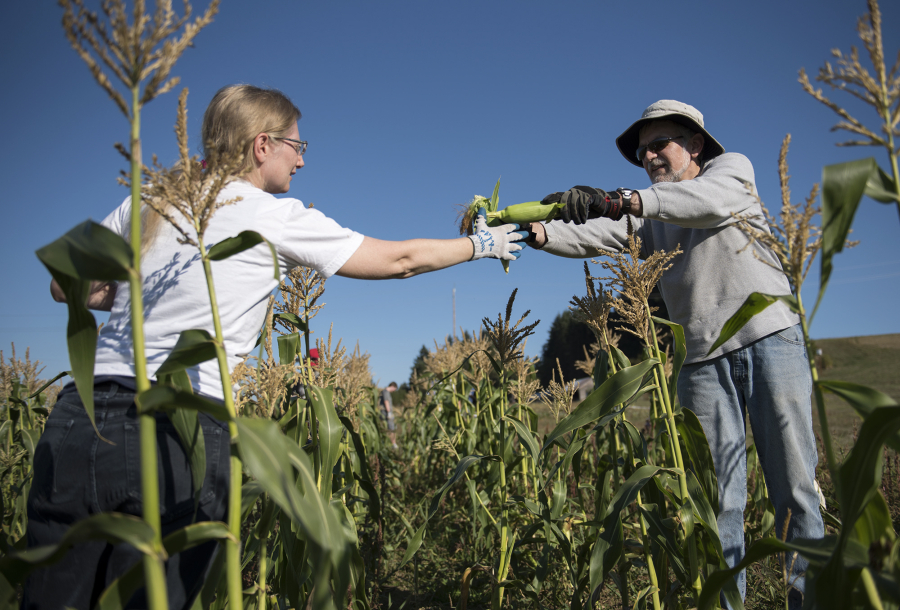SPOKANE — Washington isn’t known for corn. But it should be.
Other crops, such as apples, wheat and potatoes, dominate the state’s industry, yet a drive through the irrigated heart of Washington reveals a farming landscape dotted with cornfields.
Unlike the corn grown in Iowa, Illinois, South Dakota and Minnesota, for example, Washington corn is a rotation crop — a useful planting in years the soil needs a break from potatoes or wheat.
In 2016, Washington farmers harvested about 93,000 acres of sweet corn and roughly 200,000 acres of field corn.
Washington, California, Florida, New York and Georgia grow the most sweet corn. Across all 50 states there are 28,000 farms growing sweet corn.
Russ Kehl, a farmer near Quincy, called sweet corn “low-risk” and consistent. He doesn’t make much money off corn, but he doesn’t lose money, either.
“I can put a budget line on sweet corn and I can hit it nine out of 10 times,” he said.
An added benefit is that food processing companies — in Kehl’s case, it’s the National Frozen Food Corp. — harvest the crop. That saves Kehl time and equipment costs and allows him to invest and focus on his cash crop, potatoes. The processors also choose what variety of corn the farmer plants.
“Sweet corn is a very good rotation for the growers down here,” said Kevin Moe, a seed representative with Syngenta, an international seed agrochemical business.
National Frozen Foods has a plant in Moses Lake. That plant harvests corn in roughly a 20-mile radius around the plant, said Gary Ash, the plant manager.
“Corn is a pretty hardy crop. You rarely have a crop failure,” Ash said. “Here in the Columbia Basin corn does really well. It’s like growing in a greenhouse.”
National Frozen Foods chooses the variety of corn to plant and harvests the corn. That’s because they’re engaged in a complicated game of musical chairs.
When corn is harvested is vital to how it tastes. If it’s harvested too soon, it won’t be tender and the taste won’t be fully developed. Conversely, if it’s harvested too late it will be too soft and won’t store well.
In Washington, sweet corn harvest starts in the middle of July in the south of the Columbia Basin area. Harvest ends in the middle of October, Ash said. The picked corn goes to one of the three National Frozen Foods plants — in Moses Lake, Quincy and Chehalis.
National Frozen Foods, and others, have to time the corn harvest down to the week. With different microclimates throughout the basin, this takes a coordinated effort.
During the peak harvesting times, National Frozen Foods picks about 300 acres a day, Ash said.
About 15 percent of National Frozen Foods’ total production is exported, much of that going to Japan. Because there is no Washington state corn commodity commission, exactly how much Washington corn is sent overseas isn’t clear.
Washington’s key sweet corn counties are Adams, Benton, Franklin and Grant.



